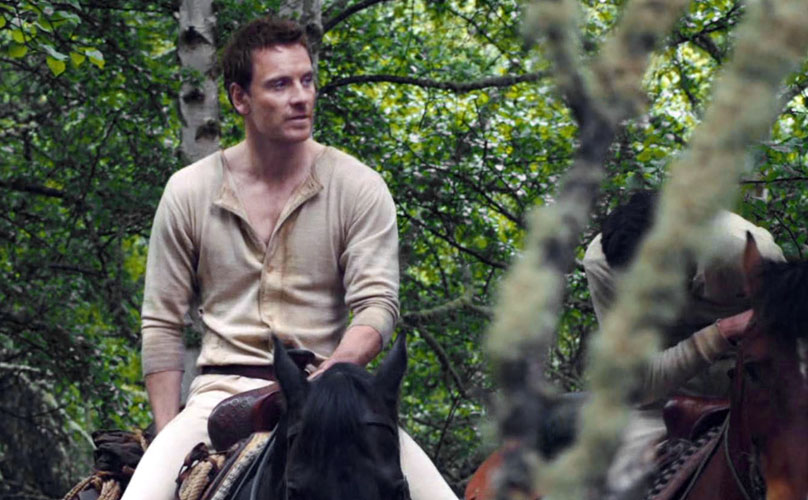
|

|

|

|

|

|

|

|

|

|

|

|


M: Why do you think the Western, even today, still resonates with people so much?
I think it's because, like future films or something contemporary, Westerns always say something about people and society. Then you can start bringing in a little bit about what's going on today. That's something great you can do subtly with genre films. And then on top of that, you can play with the language and people's preconceptions.
M: How does Slow West play with these preconceptions?
I think people still think of Westerns as American gunslinger shooters. With this film, I started looking at that period of time where people came from Ireland, Scotland, and Scandinavia. I didn't want necessarily a fast paced piece; there was a lot of traveling over distance.
M: Whose story is it?
Without spoiling it, you're supposed to think it's Jay's story. And then towards the end, you realize it's largely been about Silas's journey.
M: What attracted you to the project?
It was an organic process. I was sitting in a cafe thinking I could do a Western and then I wrote it immediately. It grew from there. It never really felt like a project.

M: What was it like working with Michael?
(Laughs) He's one of the most gifted actors in the world. I knew he was right for the part immediately, and he was fantastic to work with.
M: Where did you actually film the movie?
We filmed in New Zealand.
M: What goes through your head when you;re directing in front of these huge, beautiful panoramic landscapes?
It's interesting because when I wrote the script, I wrote specific landscapes in mind I thought would be very difficult to find. There's a scene with a crack in the rocks big enough to trap someone. And then when we turned up during location scouting, practically what I imagined was there. I couldn't believe how lucky I was. There were crazy moments where we were shooting in such scrubby forests and rock, and directly behind us were panoramic and beautiful lakes and rivers.
M: Would you say there were moments where the landscape became it's own character?
Yeah, I think so because it was always written as a character. It starts in forests, quite closed, but as the characters get opened up, the landscapes open up. The landscape had its own character arc. But I didn't shoot widescreen; I still wanted it to be close and tight and character driven.
M: What do you want audiences to take away from Slow West?
I suppose the same when I watch a movie. I want audiences to be able to revisit it the next day and think about it.
